What is Observation?
Observation is the process of using our senses (sight, hearing, touch, taste, and smell) to gather information about the world. It involves paying close attention to details and recording what we see, hear, feel, taste, and smell.
Why is Observation Important in Science?
Observation is important in science because it helps scientists gather data and make discoveries about the natural world. By making careful observations, scientists can notice patterns, make predictions, and form hypotheses that lead to further scientific investigation.
Types of Observation
There are two main types of observation: qualitative and quantitative.
- Qualitative observation: This type of observation involves describing qualities or characteristics, such as the color, shape, texture, or smell of an object or phenomenon.
- Quantitative observation: This type of observation involves measuring and recording numerical data, such as the length, weight, temperature, or volume of an object or phenomenon.
Tips for Making Good Observations
Here are some tips for making good observations in science:
- Use all your senses: Pay attention to what you see, hear, feel, taste, and smell.
- Be detailed: Record as much information as possible, including colors, shapes, sizes, and any changes over time.
- Be objective: Try to be unbiased and avoid making assumptions or interpretations while observing.
- Take notes: Record your observations in a notebook or journal, including the date, time, and location of your observations.
- Use tools: When necessary, use tools such as magnifying glasses, thermometers, rulers, or microscopes to aid in your observations.
Practice Questions
- What is the difference between qualitative and quantitative observation?
- Why is it important for scientists to be objective when making observations?
- How can using tools enhance the process of observation in science?
◂Science Worksheets and Study Guides Second Grade. Science in our world
Study Guide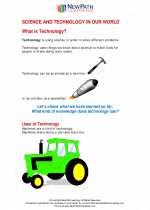 Science in our world
Science in our world  Worksheet/Answer key
Worksheet/Answer key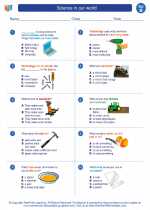 Science in our world
Science in our world  Worksheet/Answer key
Worksheet/Answer key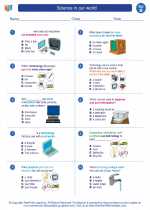 Science in our world
Science in our world  Worksheet/Answer key
Worksheet/Answer key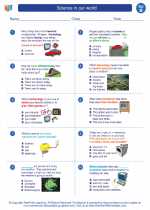 Science in our world
Science in our world  Vocabulary/Answer key
Vocabulary/Answer key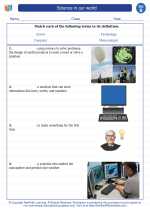 Science in our world
Science in our world 

 Worksheet/Answer key
Worksheet/Answer key
 Worksheet/Answer key
Worksheet/Answer key
 Worksheet/Answer key
Worksheet/Answer key
 Vocabulary/Answer key
Vocabulary/Answer key

The resources above cover the following skills:
LIFE SCIENCE (NGSS)
Biological Evolution: Unity and Diversity
Students who demonstrate understanding can:
Make observations of plants and animals to compare the diversity of life in different habitats[Clarification Statement: Emphasis is on the diversity of living things in each of a variety of different habitats.] [Assessment Boundary: Assessment does not include specific animal and plant names in specific habitats.]